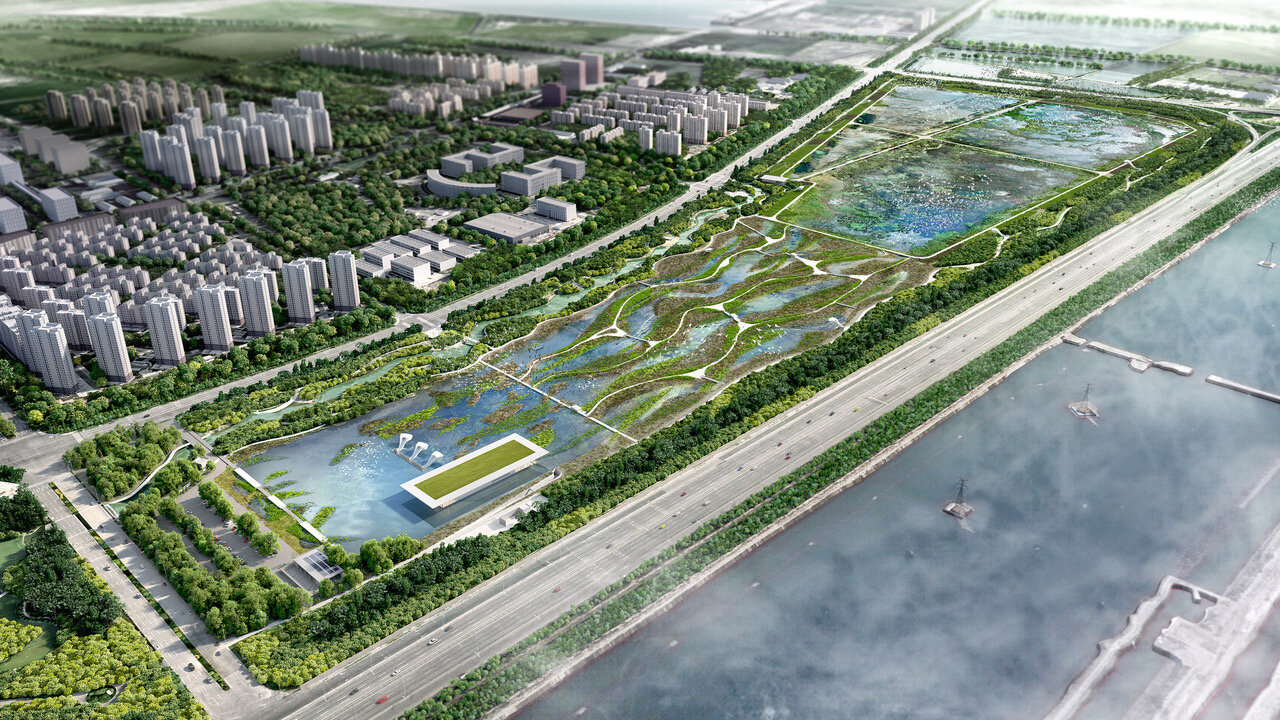Lingang Eco Park - a would-be wetland sanctuary for migrating birds
McGregor Coxall’s Lingang Eco Park design has received a special mention in Architecture Australia’s 2021 Prize for Unbuilt Work.
The wetland sanctuary in Tianjin on the Chinese Yellow Sea coast, would provide a stopover opportunity for migrating birds on the East Asian-Australasian Flyway.
Fifty million birds use this route each year to make the return journey from the Arctic Circle, through east and southeast Asia to Australia and New Zealand, but it happens to be the world’s most threatened flyway.
Newly constructed seawalls have enclosed 1.5 million hectares of intertidal habitat which has caused a rapid decline in the waterbird population. Image credit - MacGregor Coxall.
Lingang Eco Park would turn a landfill site in Lingang into a 110-hectare wetland, parkland and urban forest, supporting the needs of more than 50 species of birds in three different water habitats- an island lake with shallow rapids, a reed zone, and mudflats.
As well as being a sanctuary for endangered species, essentially a Bird Airport, the park would provide a green lung for Tianjin. A 20-hectare fringing forest protects the park from nearby urban development, and the wetlands trails, lake loop walk, cycle circuit and forest walk make up seven kilometres of paths.
The design features a 3,500 square-metre education and research area. Image credit - MacGregor Coxall.
A perimeter edge of wetland for wetland species is included, as well as open water for perching posts and waterbirds.
Over the past 10 years, newly constructed seawalls have enclosed 1.5 million hectares of intertidal habitat, and this loss of foraging habitat on the shores of China’s Yellow Sea has caused a rapid decline in the waterbird population.
Essentially a Bird Airport, the park would provide a green lung for Tianjin. Image credit - MacGregor Coxall.
The design features a 3,500 square-metre education and research area named the Water Pavilion for the 500,000 visitors expected at the site each year.
Topped with a green roof, the public can see wildlife through the cameras in the 14 bird hides, and a walkway leads to a series of observation pods for people to watch birds flying past.
Fifty million birds use this route each year to make the return journey from the Arctic Circle. Image credit - MacGregor Coxall.
McGregor Coxall worked closely with ornithologist Avifauna Research to integrate feed sources, site soils, water management and wetland vegetation into their design.
Renewable energy will also be used to move harvested rain water and recycled waste water through the wetlands. Lingang Eco Park is looking to achieve Ramsar accreditation and join the Convention on Wetlands.
Lingang Eco Park would turn a landfill site in Lingang into a 110-hectare wetland, parkland and urban forest, supporting the needs of more than 50 species of birds in three different water habitats. Image credit - MacGregor Coxall.




